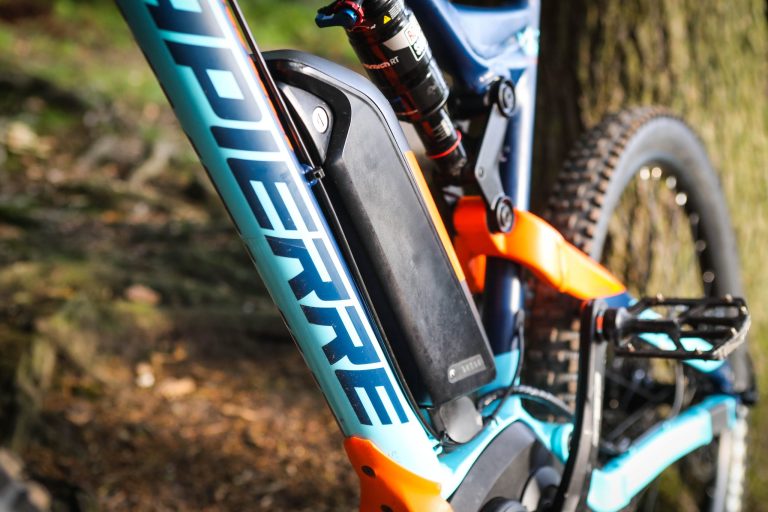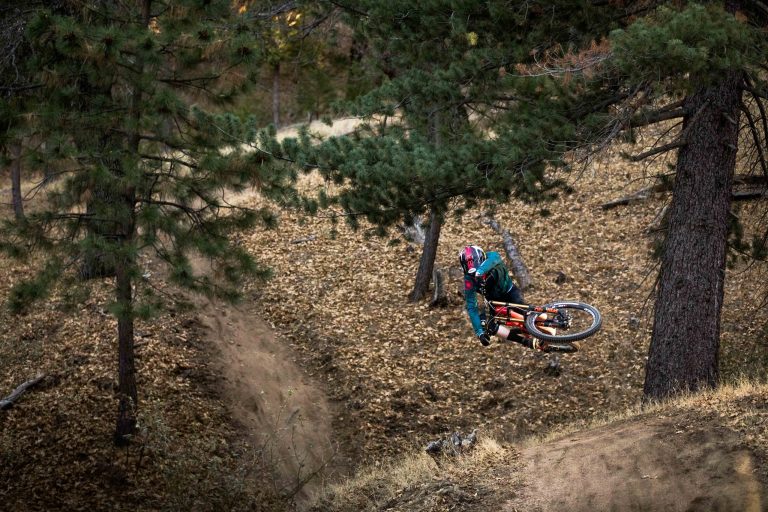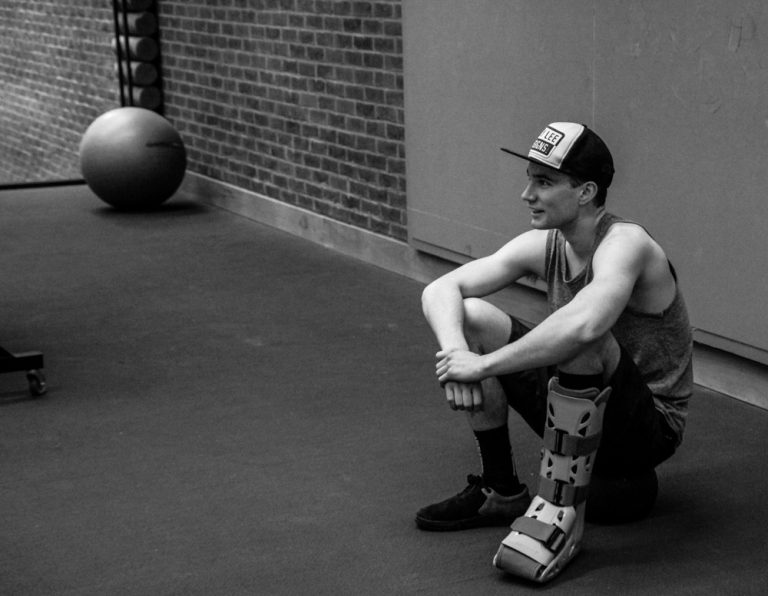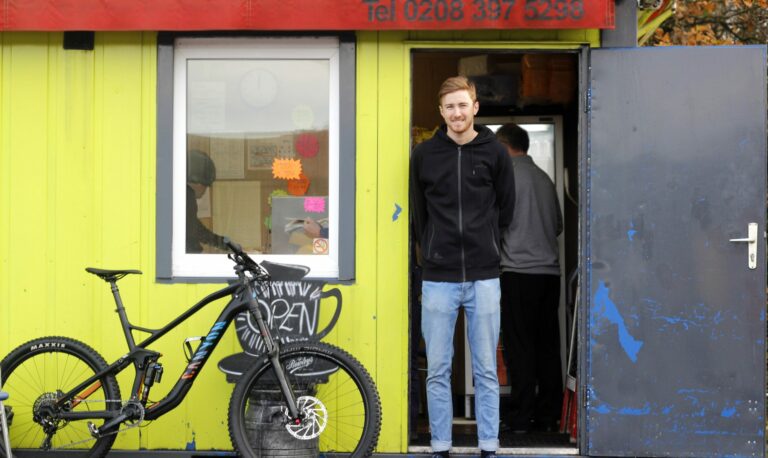 So, we’ve got a tiny company that is punching well above their weight in terms of ideas, especially in the DH arena with their ‘Slammer’ which was released in 1998. Having Missy Giove as their rider certainly helped in that respect, in fact it probably made many think that Foes were a much bigger company than they actually were. The truth is that it wasn’t until the year 2000 when Brent finally moved operations out of his garage and into the premises where they’re still located to this day. It was around that time that Brent finally started to make some bikes with less travel, but even if a model had less travel it still benefited from the same ethos. The shock was still the starting point, and of course you’d always find a trademark Foes monocoque along with a single pivot and linkage system. I don’t know about you but I have great respect for any company that comes up with a preferred way of doing things and then sticks to it rather than feeling like they have to come up with something new all the time. Brent has always felt that single pivots rule, they’re just so reliable, and if you use some form of rocker you can make it as stiff as hell and tweak the suspension to behave how you want. Judging by the number of other great bikes that we’ve ridden with a similar design we don’t think he’s wrong either.
So, we’ve got a tiny company that is punching well above their weight in terms of ideas, especially in the DH arena with their ‘Slammer’ which was released in 1998. Having Missy Giove as their rider certainly helped in that respect, in fact it probably made many think that Foes were a much bigger company than they actually were. The truth is that it wasn’t until the year 2000 when Brent finally moved operations out of his garage and into the premises where they’re still located to this day. It was around that time that Brent finally started to make some bikes with less travel, but even if a model had less travel it still benefited from the same ethos. The shock was still the starting point, and of course you’d always find a trademark Foes monocoque along with a single pivot and linkage system. I don’t know about you but I have great respect for any company that comes up with a preferred way of doing things and then sticks to it rather than feeling like they have to come up with something new all the time. Brent has always felt that single pivots rule, they’re just so reliable, and if you use some form of rocker you can make it as stiff as hell and tweak the suspension to behave how you want. Judging by the number of other great bikes that we’ve ridden with a similar design we don’t think he’s wrong either.
Visually it goes without saying that a Foes is almost defined by its monocoque structure, and although visual appeal has definitely played a part in the use of this construction technique it’s definitely not the sole reason. There might be a load of companies making crazy tube profiles and custom tubing these days (you’ve still got to be a pretty big player though to justify going down that route), but when Foes started out it was pretty much a case of bodge it using standard tubes that are available, or make something perfect yourself. Of course Brent chose the latter and the technique that they use today is pretty much the same as when they started. First you get an idea of what you want to make. Then you mock up a mould using a piece of wood. Then when you’re happy with what you’ve got you machine a replica from aluminium. You then you use a massive press to squidge your sheet of aluminium into that shape, before finally welding two of the pieces together. Its simplicity is kind of beautiful, but on the other hand it also allows very complex shapes to be made and it has allowed Foes a lot of design freedom. You’ve got to love the look of the beautiful weld all the way down your top tube too, especially when you know that the chances are that it has been welded by the man himself.
I think the fact that Brent is still so hands–on in the company is one of the things that struck me most when I finally got to visit Foes HQ last year. I knew the company was still very small scale compared to others out there, but I was still surprised at just how ‘real’ Foes are. For starters, when the trip was first organised there was no talk of poncy hotels, instead it was ‘yeah I’ve got a couch you can sleep on’. Way better if you ask me. Then, when I finally arrived at Foes I didn’t find some flash unit on an industrial estate, instead it was a couple of workshops tucked behind a bike shop on a seemingly random street. There was no sterile atmosphere either. Like I said, it was ‘real’. I’ve been to places before where it’s so clean and tidy that you’re amazed that anything is actually made there, but to me this place was a true workshop. I loved the fact that almost everywhere you looked you’d find some piece of Foes history. I’m pretty sure nothing gets thrown away at Foes, some walls were littered with frames from days gone by, gathering dust, but all the more beautiful for it. Of course dotted around there were also several CNC machines that they use for producing almost everything in–house (including the Curnutt shocks and forks), and countless jigs for assembling the various frame components.
From an outsider’s point of view you could almost say the place was a bit untidy and disorganised, but I suppose anyone would say that about my shed, and yet I know where everything is. Because Foes are so small I suppose they can work like this too, everyone knows where things are because they were  the one who put them there. The team is essentially made up of Josh the machinist, Chris who does frame assembly, Tama the engineer, Mitch who takes care of sales, and last but by no means least Brent himself. As I said before Brent just loves making things so is very hands–on in all aspects of the business from original design ideas right through to welding up the frames. Of course with an operation on this scale it’d be pretty hard not to get involved, even if you are the boss.
the one who put them there. The team is essentially made up of Josh the machinist, Chris who does frame assembly, Tama the engineer, Mitch who takes care of sales, and last but by no means least Brent himself. As I said before Brent just loves making things so is very hands–on in all aspects of the business from original design ideas right through to welding up the frames. Of course with an operation on this scale it’d be pretty hard not to get involved, even if you are the boss.
Would Foes like to get bigger in future? To some degree I think they would, and there was no hiding the fact that times are tough at the moment with all the competition from the Far East, but one thing is for sure, Brent never wants to move his production overseas. He sees keeping production in the USA as his biggest challenge, but he won’t ever give up and I think in the past year or so he’s managed to carve out a new direction which should help keep Foes doing what they do so well. He’s basically taken a step back and taken a fresh look at the frames they’re making, and as a result discovered that they could actually make them a little simpler without it having any negative effect on performance. It’s fair to say that the Mono DH for example got a bit overcomplicated in terms of construction, and complexity always costs money. On the other hand the new Hydro DH is much simpler and cheaper to produce, plus thanks in no small part to some updated geometry it actually rides a whole lot better than the Mono. That I think is essentially the future of Foes and over the next few years I think we’ll see a much simpler line up from them, almost going back to their roots. Of course everything will be just as beautifully and meticulously made as before, but it’ll just be made up from less fiddly and time consuming parts…which will in turn make the frames far more competitively priced.
There is another major part though in the new generation of ‘affordable’ Foes, and that’s where we go back to the whole rear shock thing. A Curnutt shock always added a substantial chunk to the price of a frame, but for years it was the only way that Brent could get the kind of performance and stroke length that he was after. That though is no longer the case. The likes of Fox, Cane Creek and Elka now all make shocks that Brent is more than happy to use on his frames, and the net result is that his frames can now be even more competitively priced. If proof was needed of just how good value his frames now are then you only need to look at the price of a Hydro compared to pretty much any frame coming out of the Far East with a big name on it. The Hydro is often a fair chunk cheaper. I’ve got to say that even before I visited Foes myself I would have thought that was a bargain considering he heritage involved, but after witnessing firsthand the love and soul that goes into each Foes frame I’d find it very hard to ever justify spending more on something mass produced. Maybe this is just the next step in Foes being ahead of their time? I mean wouldn’t it be great if in years to come we see other ‘boutique’ brands giving the big boys a run for the money on price. You never know, it might happen…but one thing is for sure, there will always be something very special about a Foes.





